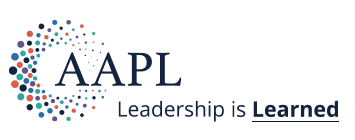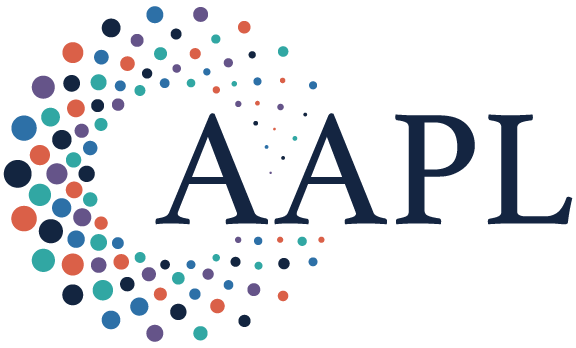Summary:
New research reveals a likely culprit of stalled innovation efforts: Teams are blending incompatible learning activities at the wrong times. The highest-performing teams don’t try to do everything at once; instead, they separate learning activities into clear episodes, establishing a rhythm that alternates thoughtfully between exploration and reflection.
Have you ever sensed your company’s innovation efforts stalling—not because of a lack of effort, but because something in the process feels off? Most leaders understand that innovation requires learning. Yet too often teams juggle multiple learning activities—ranging from interviewing customers to brainstorming ideas to after action reviews—without clarity on how they intersect, causing confusion and undermining innovation.
Through our research involving more than 160 teams, we found that successful innovation hinges not only on how much teams learn, but on when—and in what order—they engage in specific forms of learning. Just as music relies on rhythm and harmony, effective team learning requires structured, harmonious sequencing.
Four Essential Ways Your Team Should Be Learning
Innovation is not accidental. Our research highlights four distinct types of learning behaviors used by high-performing teams and examines variations in the sequence and blend of these types of team learning. Together, these comprise a toolkit that enables teams to innovate:
Experimental learning: A team deliberately tests ideas, expecting failures along the way, as part of developing new knowledge and occasional breakthroughs. Experimental learning includes activities like brainstorming and prototyping.
Vicarious learning: Teams consult with other teams or individuals who have done similar work to avoid reinventing the wheel.
Contextual learning: A team’s members scan their environment to detect market shifts, emerging trends, or competitor strategies.
Reflexive learning: A team deliberately engages in self-examination, such as by assessing strategies, revisiting goals, and discussing current challenges.
Our research reveals a likely culprit of stalled innovation: Teams are blending incompatible learning activities at the wrong times.
Cognitive neuroscience confirms what experienced leaders intuitively know: Our brains need structured breaks to turn experiences into actionable knowledge. Just as sleep helps consolidate daily experiences into long-term memory, structured reflection allows teams to integrate insights gained during exploration phases into strategies and plans. Without these deliberate rhythms, teams risk becoming overwhelmed by continual information intake—akin to endlessly inhaling without pausing to exhale—leading to confusion and burnout. By intentionally embedding reflective pauses within structured learning cycles, teams can harness their full innovative potential.
In two studies—one with 102 innovation teams in a Fortune Global 500 company and another with 61 MBA project teams—we found that all combinations of team learning were not equally effective. When teams paired reflexive learning with vicarious learning, performance improved. But when teams mixed reflexive learning with more exploratory activities—such as experimental learning or contextual learning—in the same phase, performance suffered. The highest-performing teams didn’t try to do everything at once; instead, they separated learning activities into clear episodes, establishing a rhythm that alternated thoughtfully between exploration and reflection. This sequencing helped them reduce confusion, resolve tensions, and sustain momentum.
Contrasting Stories of Team Learning
Consider two innovation teams from a large telecom company. The first, Team Alpha, delivered an innovative solution on time and on budget. From the outset, team members set aside dedicated meetings purely for reflection, where they openly discussed their project’s direction, identified clear roles, and refined their goals. When it came time for creative thinking, they shifted gears entirely, launching energetic brainstorming sessions filled with vibrant discussions and hands-on experiments. Keeping these activities distinct allowed the team to focus and avoid unnecessary tension. Each time the team regrouped to refine strategies, it made noticeable progress. Team Alpha’s careful orchestration made innovation look smooth, predictable, and almost effortless.
Team Omega, meanwhile, seemed caught in a perpetual storm. Individual meetings toggled between high-energy brainstorming and detailed task planning. Members attempting to refine strategies sometimes found their thoughts drowned out by teammates excitedly pitching new ideas. At the same time, others brought in fresh insights from the industry, further complicating the discussion. Meetings started to feel chaotic, leading to frustration and confusion. Without clear distinctions between learning activities, Omega team members frequently experienced cognitive overload that sapped energy and morale. Progress stalled, deadlines slipped, and promising ideas never fully materialized.
Creating a Harmonious Learning Rhythm
Our research shows that the highest-performing teams don’t just engage in learning—they structure it intentionally. As a leader, here’s how you can practically establish a clear, harmonious rhythm within your team:
Set a solid foundation for reflection. Begin by consistently scheduling dedicated reflection meetings. Use this time to revisit your team’s overall objectives, evaluate the effectiveness of your current approaches, and reaffirm everyone’s roles and responsibilities. Encourage open dialogue to uncover blind spots and make necessary adjustments.
Clearly distinguish exploration from refinement. Establish distinct sessions dedicated exclusively to creative exploration—such as brainstorming, experimenting, or searching the environment to discover alternative ideas and technologies—and clearly separate these from meetings dedicated to idea refinement and detailed planning. For instance, using clearly defined sprints, you might dedicate one week to free-flowing idea generation and external market exploration, followed by another week strictly focused on refining ideas, selecting the best options, and formulating detailed strategies.
Implement predictable learning cycles. Structure is key. Create a recurring schedule that alternates predictably through reflection, exploration, and refinement phases. Clearly communicate this rhythm to your team, set expectations, and enforce boundaries around each phase. Doing this ensures team members can mentally prepare, reduces confusion and cognitive overload, and helps maintain a strong strategic momentum throughout the innovation journey.
You can think of a team’s learning activities as elements of a musical masterpiece. Just as great compositions—like Beethoven’s Fifth Symphony—skillfully balance moments of tension with moments of powerful resolution, effective team learning thrives on the structured interplay between building up and then releasing tension. Harmonious learning occurs when complementary activities, such as team reflection and external expert consultations, reinforce one another, creating moments of clarity and alignment. Conversely, dissonance arises when conflicting activities, like simultaneous experimentation and detailed planning, collide and cause confusion. An unstructured approach—such as multitasking or forming multiple sub-teams without clearly defined goals—is akin to playing all musical notes simultaneously, creating cacophony rather than harmony. High-performing teams intentionally orchestrate their learning activities to establish predictable rhythms that balance tension and relaxation, driving sustained innovation.
. . .
Innovation thrives not through increased effort, but through smarter, more structured effort. Clearly sequencing and distinguishing your team’s learning activities—reflection, exploration, and refinement—turns potential chaos into strategic clarity, unlocking better decision-making and sustained innovation. Like a conductor guiding a symphony, mastering your team’s rhythm of learning transforms everyday interactions into a powerful competitive advantage, positioning your organization for sustained growth and innovation leadership.
Copyright 2025 Harvard Business School Publishing Corporation. Distributed by The New York Times Syndicate.
Topics
Influence
Systems Awareness
Critical Appraisal Skills
Related
A Smarter Way to DisagreeCoaching by Doctors for DoctorsMaking Sense of Research on How People Use AIRecommended Reading
Problem Solving
A Smarter Way to Disagree
Problem Solving
Coaching by Doctors for Doctors
Strategy and Innovation
Making Sense of Research on How People Use AI
Strategy and Innovation
Healthcare Insights: Curated for HALM November/December 2025
Professional Capabilities
Championing Physician Leadership Development: AAPL's Five-Decade Commitment Meets Healthcare's Critical Moment
Professional Capabilities
“Profiles in Success”: Certified Physician Executives Share the Value and ROI of their CPE Education


